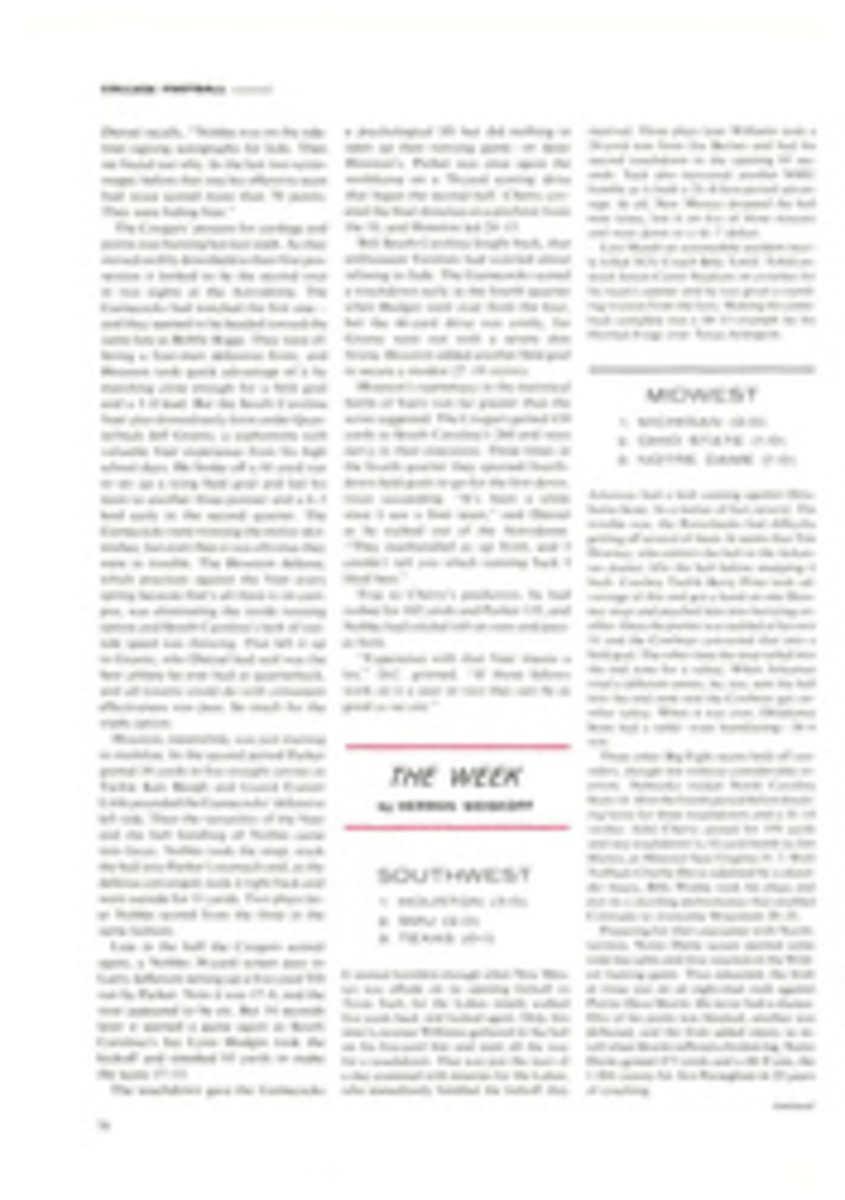
To the Queen's taste
Sutherland, paradoxically, is one of the most northerly counties of Scotland. There are few people living among the bog, hill and heather; in the coastal town of Brora barely a thousand. But Brora has a salmon and sea-trout river, which will cost you $625 a month to fish, and the gray stone town has Miss Megan Boyd, decorated by Queen Elizabeth II with the British Empire Medal as the world's best dresser of salmon flies.
If you met Megan Boyd, B.E.M., in the street (which is most unlikely, since she spends most of her time at her flytying bench) you would notice her; a woman in her 50s in a man's shirt and tie, loose tweeds and uncompromisingly heavy leather shoes that she resoles herself. "I grudge every penny spent on clothes," she says, which is why she is liable to wear her sister's castoff suits, "but I'll spend any amount on feathers. I love feathers. People send me feathers. I recall one day a lovely parcel arrived, soft and squashy, and I thought, 'How grand, more feathers.' Then I opened it; there was nothing but a scarf from some friends. Such a disappointment."
Megan lives alone in an undistinguished cottage mainly walled and roofed in dark red corrugated iron. She neither has nor wants electricity, telephone or television. She works to the music of steam radio in a shack that is lit and heated by bottled gas. Its cobwebby windows take the full blast of Scotland's east winds, but also give her a full view of the North Sea. Her father was a gillie on a nearby river, but she did not learn her art from him. "He was quite ham-fisted and hadn't the faintest idea of dressing a fly," she says. A keeper named Robert Trussler, at Carrol Rock, began giving her lessons when she was 12. She would cycle three miles to his house, spend several hours learning the intricacies of the Yellow Torrish or the Durham Ranger, have a meal and cycle home.
During the war, after holding numerous odd jobs such as delivering milk, Megan decided to go into business tying salmon flies. She soon had a good trade, having gained customers by word of mouth. "Never advertise your work," Trussler had told her. "Let your work advertise you." Now, personal orders arrive at her cottage from all over Britain, and from every country where the Atlantic salmon still thrives. Megan herself does not fish and has never even seen one of her flies in the water. "I can't even tie a fly to nylon," she says. "You know, when I hear of the number of fish caught with my flies, at heart I feel like a murderer. So I am very pleased with a letter like this...."
She delves into a pile of envelopes and brings out one from a Dr. Chapman in Milton, Mass. Dr. Chapman does not fish either, but he had seen and admired Megan's craft and wished to own a few other larger-sized creations. "Please select those you think most beautiful for framing," he wrote, and he sent a $100 check in advance. Megan does not like being paid in advance, so she has gone to the bank, cashed the check and put the money into an envelope with the notation that it is Dr. Chapman's, in case anything should happen to her before the work is completed.
During the salmon season—which in Sutherland extends from February to November—visitors drop in. Sometimes she gets bizarre on-the-spot orders. She remembers a hairy customer who sat in a chair plucking his immensely long eyebrows so that the hairs could be incorporated in the wings of his fly.
A fundamentalist at heart, Megan will refer, in case of need, to only two volumes: G. M. Kelson's The Salmon Fly, published in 1895, and T. E. Pryce-Tannat's How to Dress Salmon Flies, which appeared in 1914. The latter contains entertaining and helpful hints, such as how the Black Ostrich Herl "can usually be obtained from some fair lady's discarded headgear." Megan has one frivolous customer who pays her an annual visit simply to thumb back through the musty pages of Kelson. When he finds some tremendously old-fashioned fly, like the Bonne Bouche, the Prince's Mixture or the Silver Ardea, none of which have been used on a salmon river for nearly a century, he commissions her to make it.
Most professional flytiers use methods that approach mass production. The order is for, say, a dozen flies of one size and pattern. They first assemble the materials for the bodies and make a dozen bodies. Then they do a dozen hackles, then a dozen wings. Output is much greater that way. But that does not suit Megan Boyd at all. Each fly is an individual creation, built piece by piece in the slim jaws of her vise until the whole magical confection is finished, glowing with color and with not a single feather or fiber out of place.
To watch her tying a Jock Scott is to realize that the age of the proud manual craftsman is not dead. Including the hock and the tying silk, there are 34 pieces to this complicated fly; the wings alone comprise 14 strips and slips of feathers, plus seven more for sides, cheeks, horns and topping. From the first waxing of the silk and hook shank, and the tying-in of the silver tinsel and yellow silk of the tail, through the brightly hued feathers of the Indian crow, the ostrich, the toucan, the turkey, the mallard, the bustard, the peacock, the swan, the blue chatterer, the blue macaw, to the final crowning of the whole with a glorious gleaming wave of golden pheasant topping, her fingers are never at a loss for the right silk or tinsel to use next. And suppose the unthinkable happened, and she left out perhaps an eighth of an inch of red-dyed swan wing, or a tuft of toucan? Megan says it probably would catch salmon but it would not be a Jock Scott, nor would it be fully pleasing to her customers, who are sticklers for the ancient traditions of the sport.
The one great mistake Megan Boyd made in her life, she says, was not going down to Buckingham Palace to get her medal from the Queen. Instead, she received it locally from Her Majesty's representative. Various reasons have been given for her not going: that she would have had to dress up, or, worse still, even buy new clothes; that she never wants to go anywhere; that she would have had to leave her aged terrier behind. Actually, her real reason for refusing the invitation was her fear that she would fall behind with her work. She did not think that the pressure of work sounded a good enough excuse to turn down a royal invitation, so she blamed her absence on her dog. "As you know," she wrote to the palace, "Her Majesty is very fond of animals. I am sure that she will understand."

